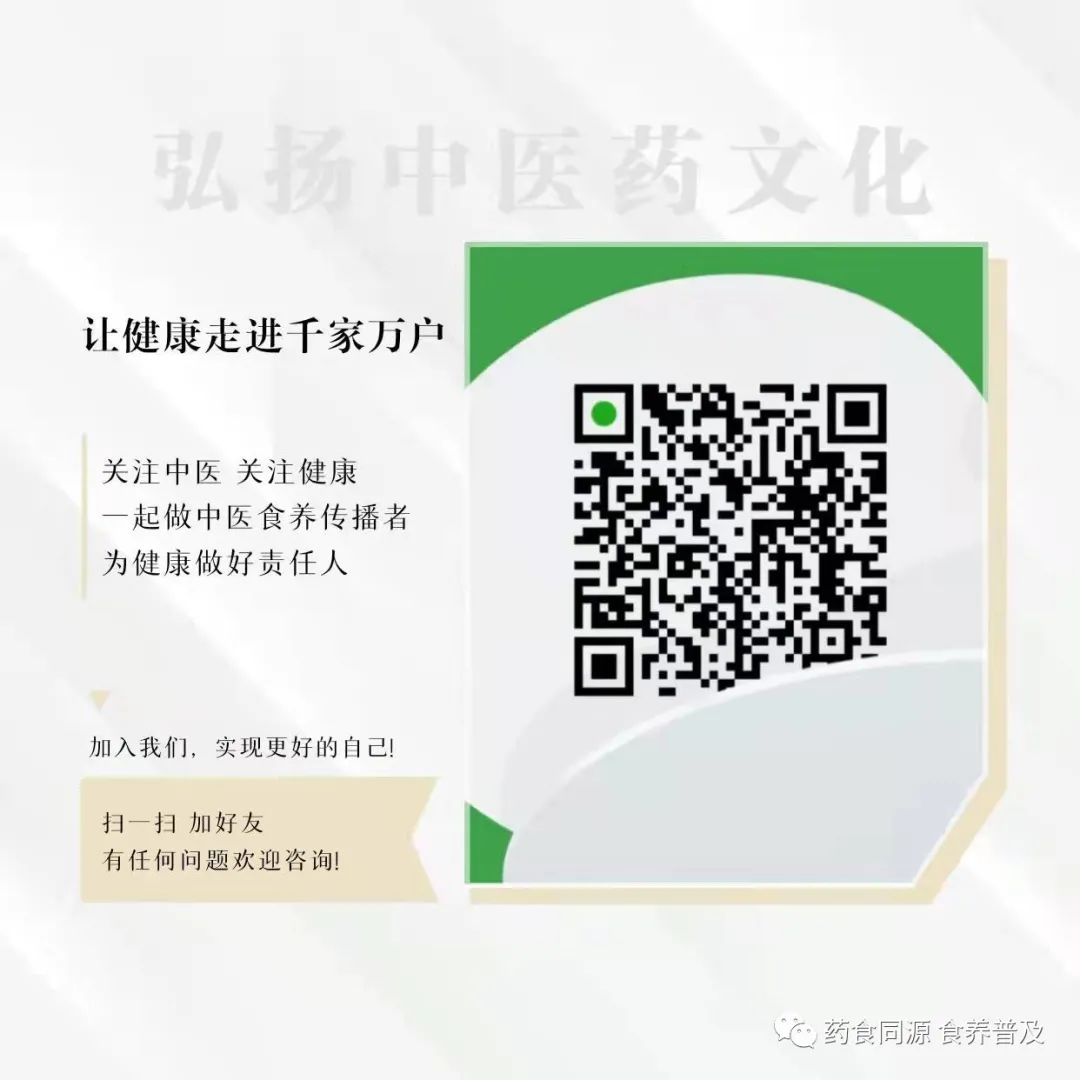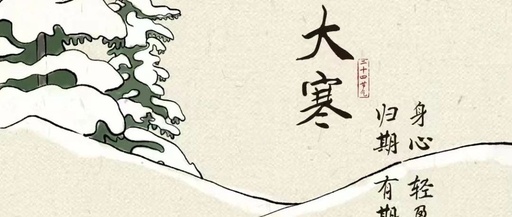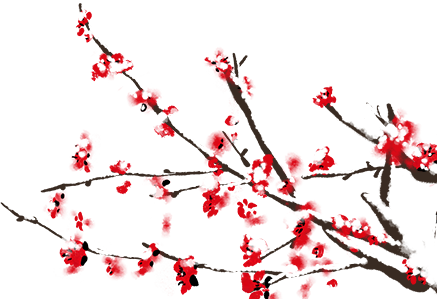
Major
Cold
Solar
Term
Today is Major Cold.
During the Major Cold solar term, Yin is dominant and Yang is declining, marking the coldest period of the year and the best time to nourish the body.
Proper health maintenance during Major Cold is key to preventing the damage of cold pathogens to the body’s Yang energy.
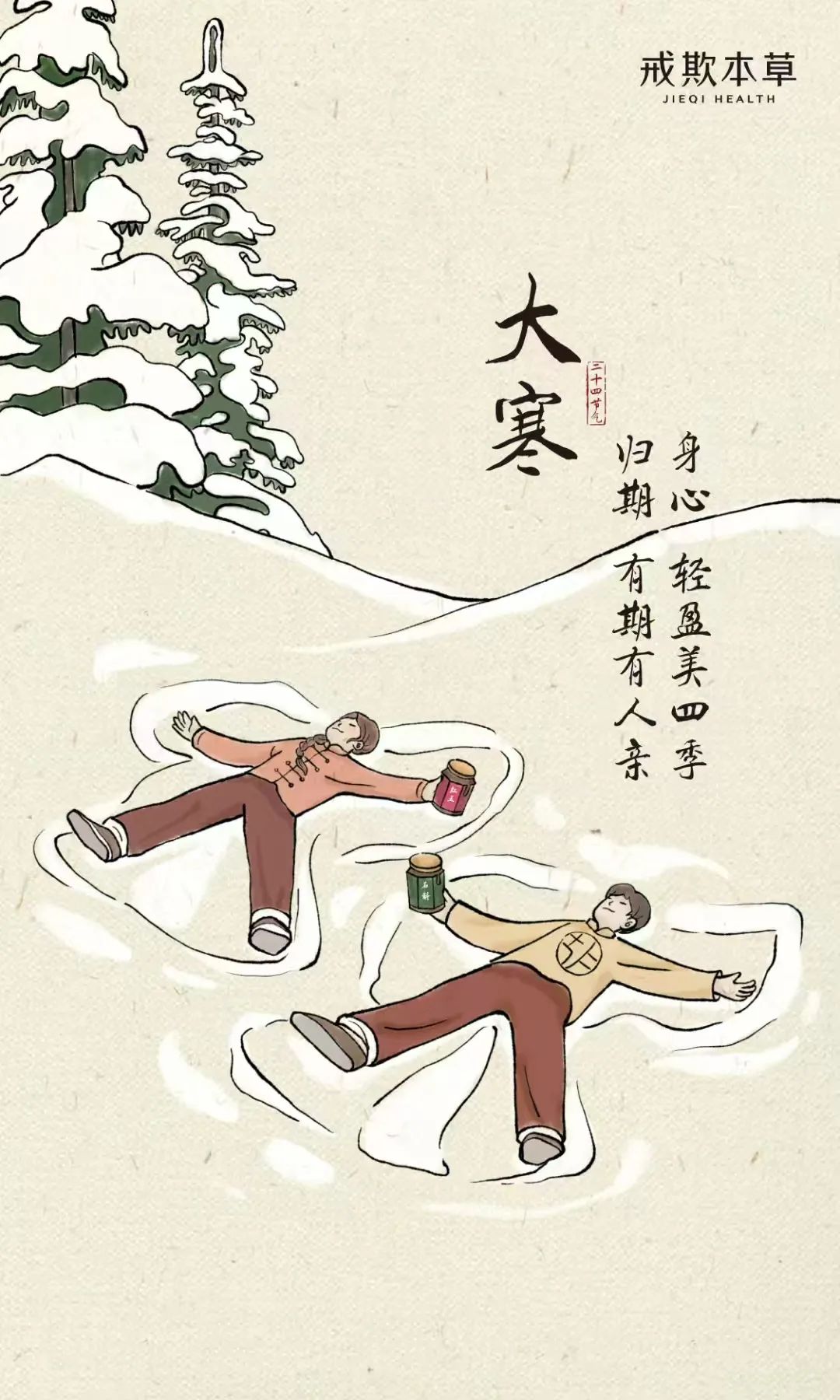
Daily Routine: Early to Bed, Late to Rise
Going to bed early helps nourish the body’s Yang energy, while rising late helps nourish the body’s Yin energy, maintaining a balance of Yin and Yang within the body.
Ensuring adequate sleep is beneficial for the storage of Yang energy and the accumulation of Yin essence.
During this period, outdoor exercise in the cold mornings or evenings is not recommended.
Diet: Nourish Yin and Preserve Yang
During Major Cold, it is advisable to reduce salty foods and increase bitter foods to nourish heart Qi, strengthen kidney Qi, and avoid sticky, hard, or cold foods. Warm meals are preferred to prevent damage to the Yang energy of the spleen and stomach, but avoid excessive consumption of overly warming foods. Foods should have a stronger flavor and include a certain amount of fats to maintain caloric intake.
Additionally, it is recommended to consume more yellow and green vegetables, such as carrots, rapeseed, and spinach.
Clothing: Windproof and Cold-Resistant
As the saying goes: “Major Cold, Major Cold, protect against wind and cold.”
If clothing is too thin, one is prone to cold invasion; conversely, if clothing is too heavy, it can lead to the opening of the pores, making one susceptible to cold pathogens.
During Major Cold, clothing should be adjusted according to changes in the weather.
Special attention should be paid to protecting the neck, nose, lungs, waist, and feet from the cold.
Exercise: Must Have Sunlight
Many elderly people like to get up early to exercise, believing that the earlier, the better.
However, in the winter mornings, due to the influence of high pressure, harmful pollutants on the ground cannot disperse into the upper atmosphere and instead remain in the lower layers.
Exercising outdoors too early can be harmful to the body. If you are accustomed to morning exercise, it is best to do so around 10 AM. Pay attention to the intensity of exercise; it should not be overly vigorous to avoid disturbing Yang energy.
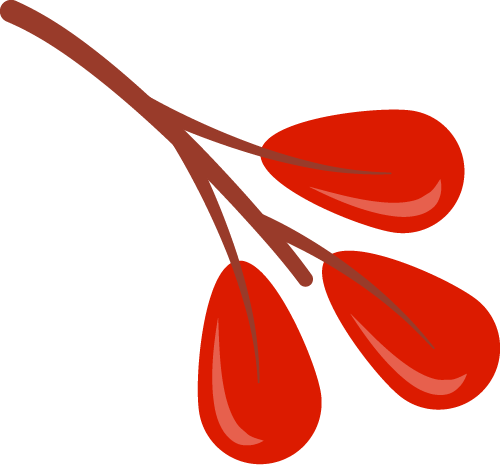
Health Tips
Practice the “Three Regulars”
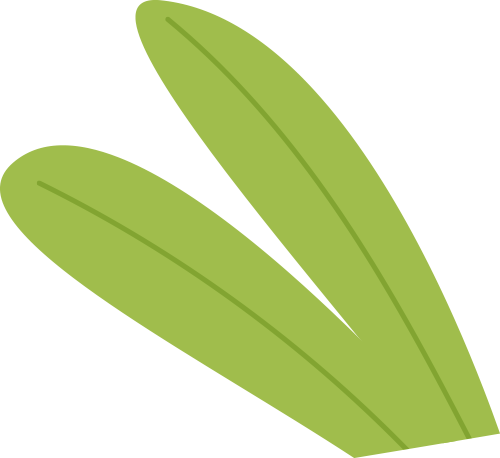
01
Regularly Rub the Nose
Every morning or before going out, rub the wings of your nose with cold water to enhance the immunity of the nasal mucosa and prevent respiratory diseases.

02
Regularly Massage the Waist
Winter is an excellent time to tonify the kidneys. Rubbing the waist with both hands helps to smooth the Dai Mai (Belt Vessel), strengthen the lumbar spine, and consolidate kidney essence.
The specific method is: rub your hands together until warm, then press on the lower back, pausing for a moment, and then rub down to the tailbone (Changqiang point). Do this 50-100 times, once in the morning and once in the evening.

03
Regularly Soak Feet
Proper foot soaking can not only dispel cold but also help warm kidney Yang.
The water temperature for foot soaking should be around 40°C, and the duration should be controlled within 20-30 minutes.
Do not soak your feet when overly full or too hungry; the water level should cover the ankles, and soak until the body feels warm and a slight sweat appears on the forehead.
Eat the “Three Items”
For health, consume the “Three Warming” items: longan, red dates, and oranges, which warm the heart and protect the liver and blood vessels.
For heat, consume the “Three Winters”: winter melon, winter jujube, and winter sugarcane, which nourish blood, moisten dryness, and lower the three highs (hypertension, hyperglycemia, and hyperlipidemia).
For moistening dryness, drink the “Three Teas”: warming ginger and jujube tea, juicy water chestnut tea, and black tea to support Yang and lower lipids.
Massage the “Three Points”

01
Taixi Point (Kidney 3)
Located on the inner side of the ankle, in the depression between the tip of the inner ankle and the Achilles tendon.
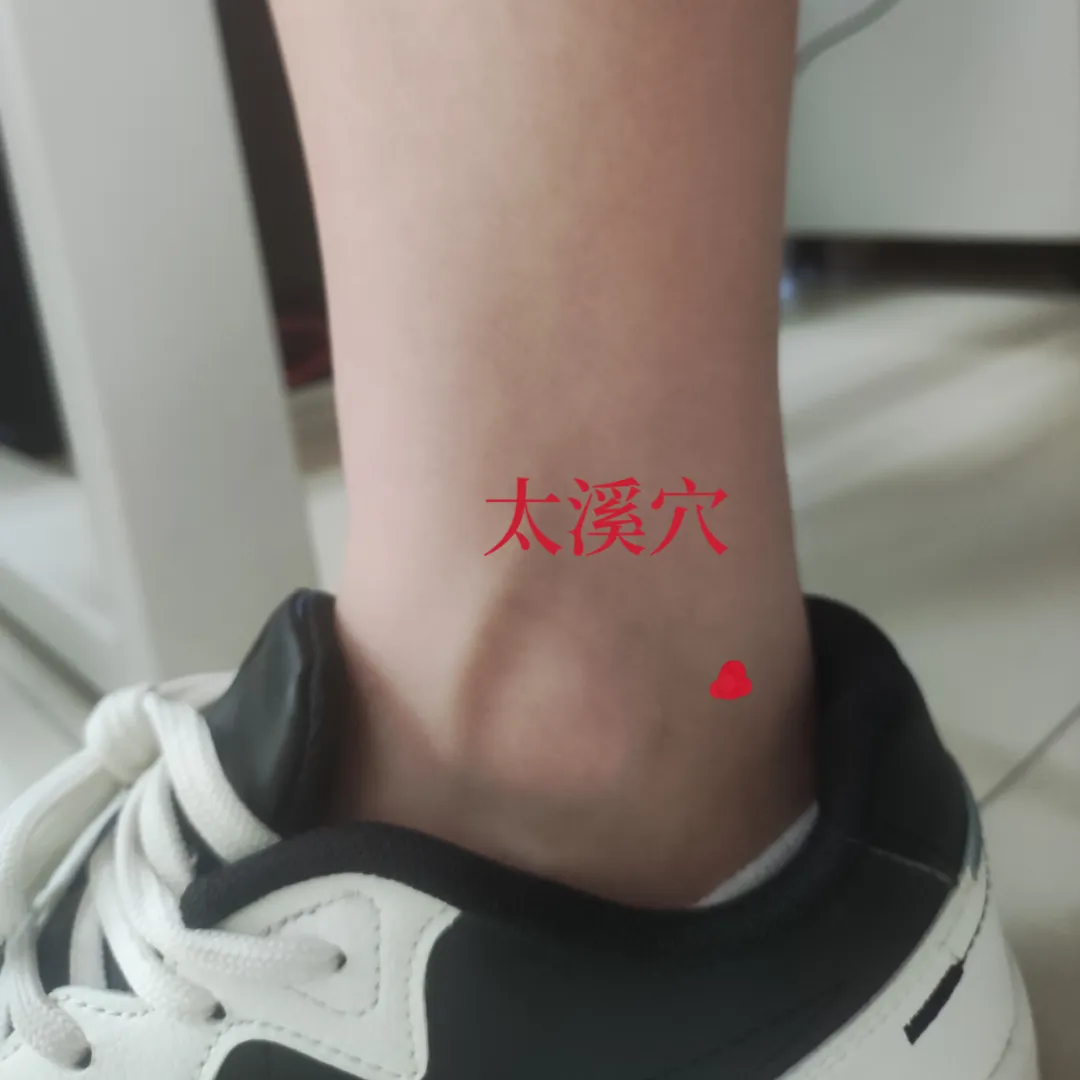
Massage twice daily using the fingertips, applying pressure until a slight soreness is felt, for 10 minutes each time, which can tonify kidney Qi.

02
Sanyinjiao Point (Spleen 6)
Located on the inner side of the lower leg, 3 inches above the tip of the inner ankle, at the posterior edge of the tibia.

Massage twice daily using the thumb, gradually increasing pressure, for 5-6 minutes each time. Regular massage of Sanyinjiao can help regulate Qi and blood, delaying aging. However, pregnant women should avoid massaging this point.

03
Zhaohai Point (Kidney 6)
Located on the inner side of the foot, 1 inch below the tip of the inner ankle, in the depression at the lower edge of the inner ankle.
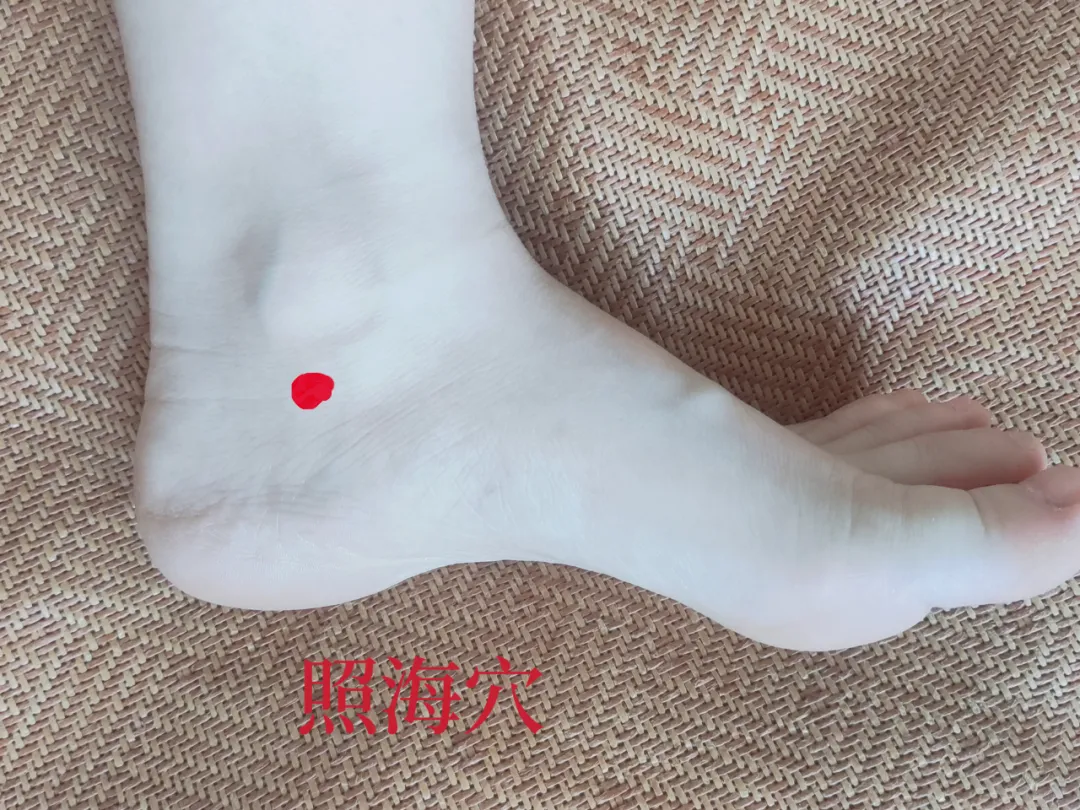
Press Zhaohai Point twice daily for 10 minutes each time to nourish kidney Yin.
